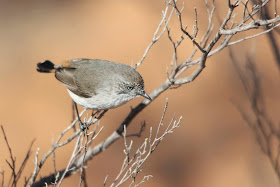Well it's been so long I have to familiarise myself with the post editor! It was the return of the Spotted pardalotes to ground level that did it.
In
November 2011 I had my first close encounters with
Pardalotus punctatus. Some pictures I managed (with an old lens) were fashioned into the banner for this blog and the avatar for a few networking accounts (Instagram and the like).
Earlier this week I was at exactly the same spot - crossing the Billabong Bridge at Blackburn Lake - and came across a pair tending to this year's nest. It was great to see them again and I just happened to have my camera!
 |
| Spotted pardalote (male) Pardalotus punctatus Blackburn Lake |
I observed:
- that seeing the the male bird from above demonstrates how it gets its name - so many spots!
- that both male and female birds work at the nest - generally taking it in turns
- that the entry to the nest in this instance was perilously close to the water level of this urban creek. I'm sure it would be prone to flooding
I would like to find out:
- whether these two birds are the same as the 2011 pair
- how long that tunnel is and whether it is designed to withstand rises in water level
- whether Spotted paradalote return to the same nesting site (regardless of success)
I really relished the moment and am looking forward to keeping an eye on them. This
newspaper article also celebrates the pardalotes at this time of year.
 |
| So many spots! Pardalotus - spotted like a leopard, punctatus - spotted bird |
 |
| Spotted pardalote (female) carrying a little something for the nest |
I tried to capture the precariousness of the situation with this iPhone shot. The entrance to the tunnel (oval) was hidden amongst the weed we call Wandering Jew
Tradescantia fluminensis. This waterway is upstream from Blackburn Lake proper. Suburban stormwater flows in here and the creek is subject to massive fluctuations in flow.
We'll see how they get on!
Bird On!











































